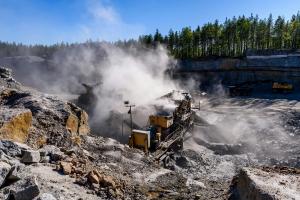UNECE Resource Management Week 2024 spotlighted the growing roles of the United Nations Framework Classification for Resources (UNFC) and the United Nations Resource Management System (UNRMS) in promoting sustainable development through enhanced integration and effective management of natural resources.
Growing global application: The adoption of UNFC and UNRMS continues to expand, as evidenced by new legislation such as its integration into the EU Critical Raw Materials Act. In addition to increasing use at national level in Africa, the African Union Commission’s African Mineral and Energy Resources Classification and Management System (AMREC), which is based on UNFC and UNRMS, aligns with both the Africa Mining Vision and the SDGs. This increasing adoption underscores the frameworks' utility and applicability across diverse legal and regulatory environments.
Expanding network of International Centres of Excellence on Sustainable Resource Management (ICE-SRMs): The establishment and potential expansion of ICE-SRMs—from Africa to Latin America and East and Southeast Asia—demonstrate the momentum around the UNFC and UNRMS frameworks. The growing interest in establishing new Centes in countries like Armenia, China, and India further reflects their global appeal and practical utility.
Bridging Documents and methodological advancements: This year's meeting highlighted updates in bridging documents and methodologies that enhance the integration of UNFC and UNRMS into national and regional policies. Updates to the Bridging Document between the Committee for Mineral Reserves International Reporting Standards (CRIRSCO) Template and UNFC and new bridging documents with countries like China and initiatives such the Pan African Resource Reporting Code (PARC) are examples of how these frameworks foster a transparent, integrated approach to managing the supply chains of critical raw materials.
Developing global case studies, best practices and innovative technologies: The UK's Cornwall region exemplifies the successful implementation of UNRMS guidelines, optimizing local resource management. This case study joins a broader collection of global examples demonstrating the efficacy and versatility of the UNRMS framework across various settings. Serving as a model, these instances highlight the substantial benefits of adopting standardized, sustainable resource management practices. The integration of cutting-edge technologies like blockchain and artificial intelligence into the UNRMS framework, as discussed at the event, could further boost transparency and accountability in resource governance.
Future directions: Looking forward, the discussions laid a foundation for continued, networked and collaborative efforts to advance the global resource management agenda, with UNFC and UNRMS as integral tools.
